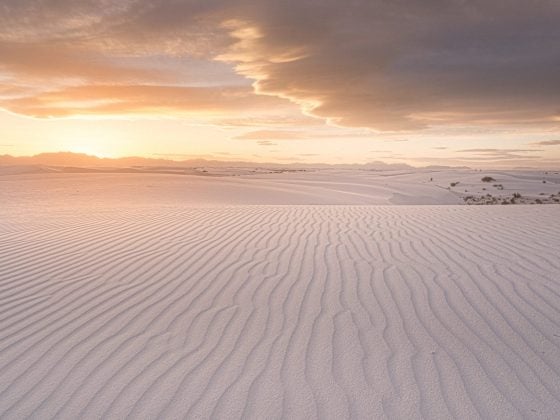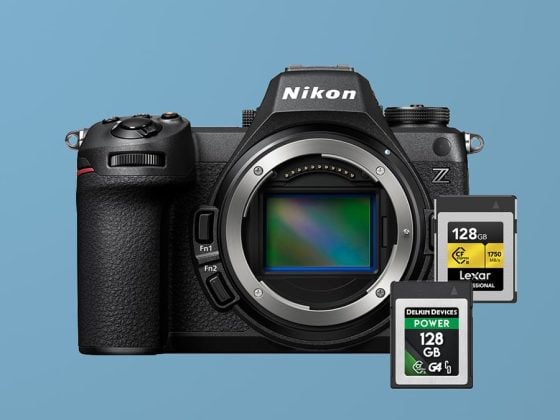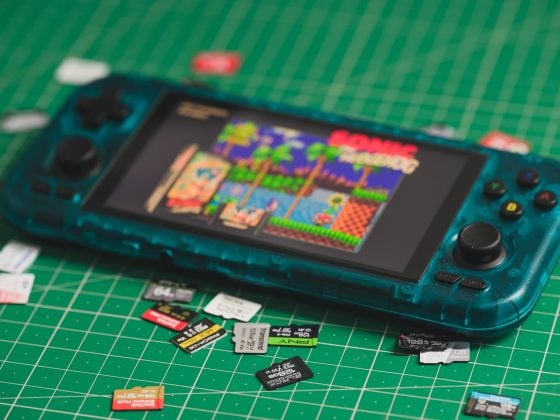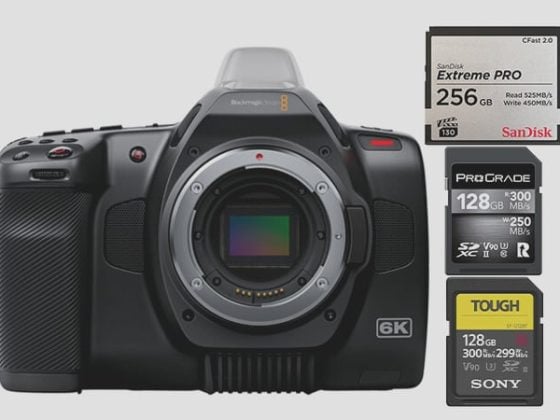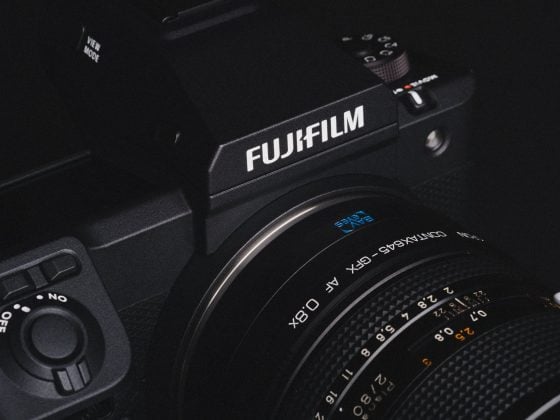A speed comparison between all the most popular CFast and CF cards tested in the Canon 1DX MkII.
The Canon 1DX II with its insane burst speeds and memory card write speeds, now supports not only CF memory cards but also the new CFast 2.0 memory card.
Whenever there is a new type of memory card on the market it always causes a little confusion. So to find out what’s the best memory card, CF vs. CFast for the 1DX II, and the fastest CFast memory card, I’ve tested them all in camera.
Best Memory Card For The Canon 1DX Mark II
Since the Canon takes both CF cards and CFast cards, there are a few things to be aware of.
First, you can’t use two CFast cards in both slots.
You can only use CFast cards in the CFast card slot and only the CF cards in the CF card slot.
If you want to run a dual memory card setup, you need to buy both types of cards.
If you don’t do a lot of continuous burst shooting but you need to run dual memory cards for backups or the RAW+JPEG setup for client hand-off, then you don’t need to buy the fastest CFast cards out there. Less expensive cards will also work fine, although you have to be careful with the off-brand cards as people have some issues with them producing corrupted files, I’ve never had such issues with any of my cards.
Also, keep in mind, if you running a dual memory card setup, set to back up, then your write speeds will be bottlenecked to your slowest card, which will most likely be the CF card.
Camera Specs
Sensor: Full Frame 20.2 MP / Processor: Dual Digic 6+
CF Memory Card Type: Cfast 1.0 or 2.0 / CF (Compact Flash)
Continuous Burst: 14fps (16 in Live View)
Size of Buffer: 1.28GB estimate
Uncompressed Shots Till Buffer Fills: 330-400 with Lexar 3500x
Canon 1Dx Mark II – Amazon / Adorama / BHphoto
Lexar CR2 CFast Memory Card Reader – Amazon / Adorama / BHPhoto
Canon 1Dx II Memory Card Speed Comparison
*USB 3.0 speeds were performed with a PC using Crystal Disk with Windows 10. Thunderbolt speeds are tested on a Macbook Pro using the BlackMagic Speed Test. I also used AJA System Test which gave similar results.
Camera write speeds are gathered from doing a serious of long burst shots, where the time taken for the buffer to clear is calculated against the amount of data captured. The number listed is an average of three.
| Memory Card | |||
| CFast 1.0 / 2.0 Cards | Thunderbolt – Read | Thunderbolt – Write | 1DX II Write |
| Lexar 64GB 3500x | 475.4 MB/s | 364.7 MB/s | 258.12 MB/s |
| Lexar 128GB 3600x | 478.9 MB/s | 364.6 MB/s | 253.81 MB/s |
| Transcend 128GB | 534.7 MB/s | 395.3 MB/s | 251.15 MB/s |
| Delkin 128GB CFast 1.0 | 447.9 MB/s | 196.8 MB/s | 172.38 MB/s |
| Sandisk Pro 64GB | 513.6 MB/s | 180.1 MB/s | 166.50 MB/s |
| Atomos 64GB CFast 1.0 | 239.5 MB/s | 91.4 MB/s | 85.36 MB/s |
| Super Talent 64GB CFast 1.0 | 463.9 MB/s | 83.5 MB/s | 80.04 MB/s |
| CF ( Compact Flash ) | USB 3.0 Read Speed | USB 3.0 Write Speed | 1DX II Write |
| Lexar 1066x 32GB | 155.50 MB/s | 138.40 MB/s | 100.80 MB/s |
| KomputerBay 1066x 32GB | 153.34 MB/s | 135.90 MB/s | 99.75 MB/s |
| Transcend 1000x 32GB | 155.30 MB/s | 132.80 MB/s | 98.81 MB/s |
| KomputerBay 1000x 32GB | 147.80 MB/s | 134.90 MB/s | 98.37 MB/s |
| Sandisk Extreme Pro 32GB | 154.90 MB/s | 135.20 MB/s | 97.76 MB/s |
| Toshiba 1066x 32GB | 158.00 MB/s | 134.30 MB/s | 96.43 MB/s |
| PixelFlash 1106x 32GB | 154.34 MB/s | 90.71 MB/s | 78.74 MB/s |
| Kingston 600x 32GB | 114.90 MB/s | 101.70 MB/s | 76.85 MB/s |
| Sandisk Extreme 32GB | 118.10 MB/s | 68.43 MB/s | 59.38 MB/s |
| Lexar 800x 32GB | 152.70 MB/s | 44.72 MB/s | 41.32 MB/s |
| Transcend 800x 32GB | 152.30 MB/s | 40.25 MB/s | 37.05 MB/s |
| Transcend 400x 32GB | 152.50 MB/s | 39.55 MB/s | 36.41 MB/s |
| KomputerBay 600x 32GB | 85.77 MB/s | 51.16 MB/s | 29.11 MB/s |
| KomputerBay 800x 32GB | 86.42 MB/s | 50.83 MB/s | 29.01 MB/s |
The different sizes of cards of the same brand and model usually have very close to the same performance.
CFast Memory Card – Speed Test Overview
Getting this test right was a little tricky. I was finding that the fastest CFast 2.0 cards like the Lexar 3500x and 3600x allowed me to shoot RAW indefinitely at 14 fps. I was a little worried, I spend all this money on these cards and renting the camera and I wasn’t able to get speed results.
However, when in live view the camera shoots at 16fps since there is no delay from the mirror slapping, and at 16fps I was able to fill the buffer. It just took something like 400 shots and 30 seconds of continuous shooting before I could fill the buffer.
Here is a list of how the Cfast cards were performing.
RAW Shots Before Buffer Filled – CFast Cards
For these tests, I take several samples so the speed isn’t always the same between bursts. The Lexar 3600x had the most fluctuations.
The faster cards also allowed me to shoot for about 30 seconds before filling the buffer. The slower cards were about 7-15 seconds.
I know Canon advertises 170 RAW shots, but this is what you can expect to get in the real world with these cards.
Lexar 3600x – 300-400
Lexar 3500x – 330-400
Sandisk Extreme Pro – 140-145
Transcend – 300-370
Delkin – 150-170
Atomos – 95
Super Talent – 90
Fastest CFast Memory Card For The Canon 1DX II
Results for the CFast 2.0 cards are very interesting and rather extreme. Lexar and Transcend seem to be the only cards that were the top performers.
With these three cards you can shoot indefinitely at 14fps without ever filling the buffer.
| 128GB | |
| Lexar 3500x | Amazon / Adorama |
| Lexar 3600x | Amazon / Adorama |
| Transcend | Amazon |
Keep in mind if you decide to go with Sandisk Memory cards, that Canon has issued a warning with using Sandisk Cfast cards. You may get corrupted files if you power off you camera right after shooting a burst. The solution – shoot a few extra shots before you power off you camera. Or just avoid Sandisk Cfast cards, they’re not that great anyway.
Fastest CF Memory Card For The Canon 1DX II
Lexar, Transcend, KomputerBay, Toshiba and SanDisk all seem to perform close to the same in camera. But the Lexar 1066x was the fastest.
| 128GB | |
| Lexar 1066x | Amazon / Adorama |
| Transcend 1000x | Amazon / Adorama |
| Sandisk Extreme Pro | Amazon / Adorama |
| Komputer Bay 1066x | Amazon |
CF vs. CFast with the Canon 1Dx II
So what’s the difference between CF and CFast memory cards besides just speed?
For one, CFast is where there future is headed, while CF memory cards will eventually be phased out as CFast technology become more realistic in price.
You won’t see a lot of manufactures making any new innovations on CF memory cards other than making them bigger. The problem is SD cards are getting very fast and many UHS-II cameras like the Fujifilm X-T2 out now performs CF cards.
CFast cards also use a new type of connection so they are not interchangeable with CF cards.
What is CFast Exactly?
This new type of card uses the same type of SATA interface that our modern hard drives use, compared to the older UDMA (Ultra Direct Memory Access) found in standard CF cards. And that’s pretty much what CFast is, Sata flash cards for our cameras.
The new CFast memory cards also use a ‘”trim” command to help manage storage on the card. This not only helps the cards last longer, but it also helps maintain write speeds. Those who have ever installed an SSD into a Mac probably know about trim all to well.
So that’s pretty much it. CFast cards use technology from the 2010’s+, while CF cards use technology from the 1990s. Essentially :).
CFast Cards vs CF Cards For Video On The Canon 1Dx II
Since the Canon 1DX II can shoot internal 4k video with MJPEG compression at 800mb/s or 500mb/s, most of the faster CF (1000x or above) will work for 500mb/s and you’ll most likely need Cfast cards to shoot at 800mb/s.
I didn’t test video in the 1DX II because I ran out of time, however based on 4k 500mb/s test results from the Canon 5D IV, you’ll need pretty fast CF cards, around 60MB/s write speeds or great to record 4k video, so for 800mb/s you’ll likely need around 60% more speed, which really only means CFast cards.
The good news is Cfast cards will also work some external video recorders so you can always record with your Cfast card if you want to go clean HDMI out to a Atomos Ninja Star or something as well, which is pretty cool.
Fastest CFast Memory Card For The Canon 1DX II – Bottom Line
The Fastest Cfast Memory Cards are no doubt the Lexar 3600x, Lexar 3500x, or the Transcend.
However, if you don’t need the very fastest, some of the less expensive cards like the Delkin are a better option for you.
Do you need CFast memory cards for the Canon 1Dx Mark II or can you just use standard CF cards?
Bottom line is, you probably need both.
Running a single CF card should be fine unless you’re doing some serious continuous burst photography, otherwise you’ll likely not really notice the difference between using CF and CFast memory cards.
Considering that CF memory cards are considerably cheaper, they might be a better option for the wallet for when you want to use this monstrous beast of a camera for casual shooting.
However, Cfast cards are fast and they are also used in some external recordings like the Atomos Ninja. So the CFast card you buy for your camera can also work great as a card for your external recorder if you choose to go HDMI out when recording video.
You can also order the 1DX II as a bundle with a CFast card, not a terrible idea. But keep in mind, that bundle comes with a Sandisk card that did not perform very well.
| **This website contains affiliate links. We will earn a small commission on purchases made through these links. Some of the links used in these articles will direct you to Amazon. As an Amazon Associate, I earn from qualifying purchases. |


